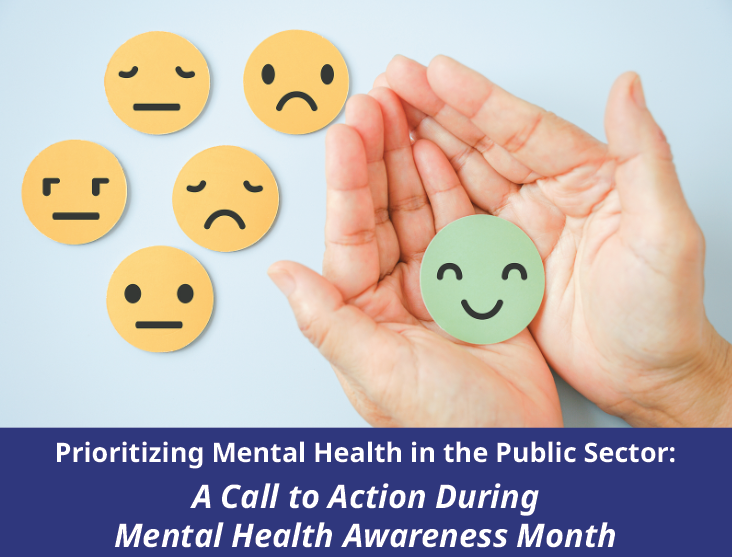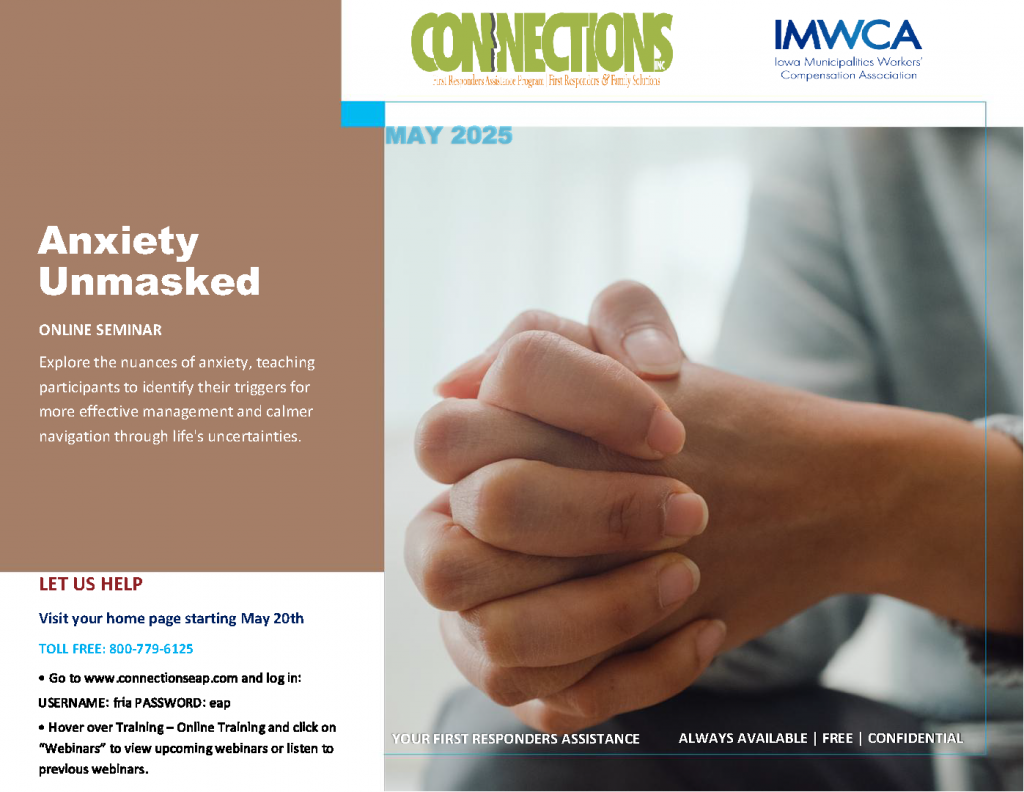
Every May, Mental Health Awareness Month serves as a vital reminder that mental well-being is just as important as physical health. Across the United States, communities, organizations, and individuals come together to raise awareness, reduce stigma, and promote mental wellness. For those working in the public sector, this is an annual spotlight that is especially relevant. Public employees face unique pressures that can take a serious toll on mental health, and it’s time we make their well-being a priority.
The Mental Health Landscape in the Public Sector
The public sector is powered by people who provide essential services—emergency responders, road workers, administrators and countless others. These roles are often high-stakes, under-resourced, and exposed to emotional strain. Public employees frequently encounter demanding workloads, public scrutiny, bureaucratic constraints, and political pressures. For many, these stressors are compounded by a lack of mental health support, outdated workplace norms, or fear of stigma.
While the broader conversation around mental health has become more open and inclusive in recent years, public institutions have often lagged behind. Tight budgets and limited HR capacity can delay meaningful progress. Yet the cost of neglect is high: burnout, absenteeism, low morale, high turnover, and diminished service quality.
Why This Matters Now
Mental Health Awareness Month is not just symbolic, it’s a strategic opportunity for public sector leaders to foster a more supportive and resilient workplace culture. Post-pandemic realities, rising community needs, budget constraints and growing workforce challenges make this more urgent than ever. If governments want to retain skilled employees and maintain effective service delivery, mental wellness must become a core component of organizational health.
What Public Sector Employers Can Do
Leaders in government and public agencies have a responsibility to support the mental well-being of their employees, not just for moral reasons, but to ensure the sustainability and effectiveness of their workforce. Here are some strategies public sector employers can implement during Mental Health Awareness Month and beyond:
- Normalize Conversations About Mental Health
Create safe spaces for employees to talk about stress, burnout, and mental health without fear of judgment. Encourage managers to lead by example, sharing their own challenges and advocating for balance.
- Invest in Mental Health Resources
Offer employee assistance programs (EAPs), teletherapy services, or mental health workshops. Ensure employees know how to access these services and feel empowered to use them.
- Train Managers and Supervisors
Equip frontline leaders with the tools to recognize signs of distress, have compassionate conversations, and guide employees toward appropriate support.
- Prioritize Work-Life Balance
Flexible scheduling, remote work options (where feasible), and clear expectations around after-hours communication can reduce chronic stress.
- Measure and Address Burnout
Conduct regular surveys or check-ins to gauge employee well-being. Use this data to identify departments or roles at risk and develop targeted interventions.
- Review Policies and Culture
Examine whether current policies, performance expectations, or workplace culture inadvertently contribute to employee stress. Foster an environment where self-care is encouraged and respected.
A Community-Wide Commitment
Promoting mental health in the public sector isn’t just the responsibility of HR or upper management, it’s a shared commitment that requires buy-in at every level. Department heads, union leaders, elected officials, and frontline employees all have a role to play in reducing stigma and creating supportive workplaces.
May is the perfect time to start or expand these efforts. Host a mental health awareness campaign. Offer a lunch-and-learn on stress management. Highlight employee testimonials about mental health journeys. Recognize departments that champion well-being initiatives. The goal is to move beyond awareness and into action.
Looking Ahead
A mentally healthy workforce is not a luxury – it’s a necessity. When public employees are supported, the ripple effect reaches every corner of the community. Services improve. Morale rises. Retention strengthens. And perhaps most importantly, we begin to rewrite a narrative where public service does not have to come at the cost of personal well-being.
As we observe Mental Health Awareness Month this May, let’s commit to building workplaces that honor not just the hard work of our employees, but their humanity. Let’s invest in systems that care for the caregivers, support the supporters, and value the vital role mental health plays in the public good.
Because behind every policy, every program, and every public service, there’s a person who deserves to feel seen, supported, and well
2025-2026 Renewal Documents
In the coming days, you will receive an email notification indicating that your annual membership renewal documents have been uploaded to the member portal.
To access these electronic documents, please log in to the portal on the IMWCA website at imwca.org. Please note that while the renewal documents are available online, your premium invoices will continue to be delivered via postal mail.
If you need help with your username or password for the member portal, please do not hesitate to contact us at imwcamemberaccess@iowaleague.org.
Brush Pile Burning – Are You Prepared?

Spring has arrived in Iowa, and along with warmer weather comes the inevitable windstorms and tornadoes. A byproduct of the storms is the piles of tree branches that end up in city or county burn piles. As our members look to begin to burn down their piles, there are a number of employee safety, property liability, and environmental liability issues that exist. Members should proactively implement several best practice procedures to avoid these exposures.
To help our members with this process, IMWCA cooperated with the Iowa Department of Natural Resources and ICAP to develop a Brush Pile Burning Safety. The manual contains guidance to help employees safely start the burn and how to properly monitor the burn’s progress to avoid collateral fires from spreading.
Before you start burning this spring, please review your burn procedures, if you don’t already have a set of burn procedures, please consider adopting our model manual. Every year, we have some serious burn injuries that could have been easily avoided if the employee had had some direction on how to manage an active burn pile.





